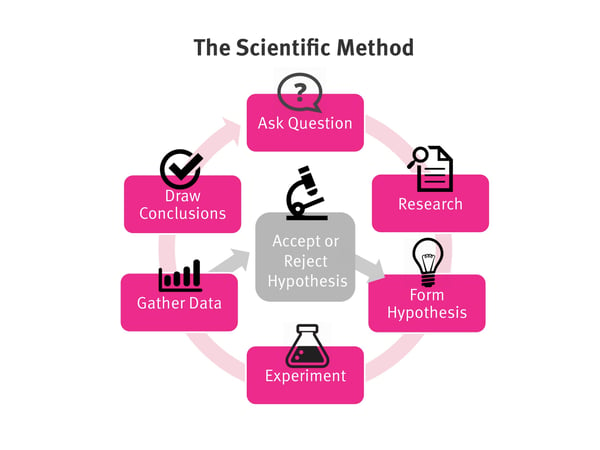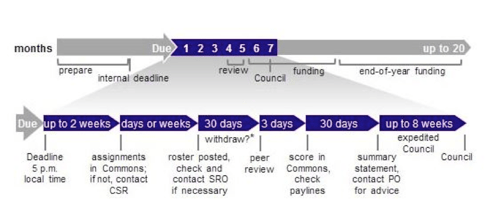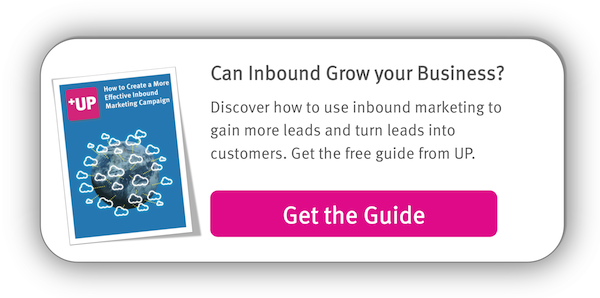It’s tempting to look at best practices in B2B marketing and apply them when approaching scientists with a product or service. However, there are some key differences in how scientists think and behave which mean that these typical, accepted approaches to marketing are less likely to work.
While science might have a commercial aim (like the development of a new pharmaceutical), to many scientists and researchers, scientific investigation is primarily about making new discoveries or gaining understanding. This is a fundamentally different mindset to a business goal of selling a product.
The currency of science is data, which is used to support or refute a hypothesis. The standard marketing practice of selling something on the basis that it either increases a company’s profit or reduces its costs doesn’t resonate with scientists. For scientists, it’s about achieving defendable experimental results as quickly as possible. Products that can prove that they provide a competitive edge in this area will appeal more than those that don’t.

Understanding the scientific process
It’s useful for marketers to remember how the scientific mind is trained. Initially, a scientist will ask a set of questions or make observations about an unknown. He or she will gather information that will help formulate a hypothesis. She will design ways to test the validity of the hypothesis or model and set up controlled experiments to produce data. Once results have been produced they will be subjected to further testing. The scientist remains skeptical of the conclusion until the results can be reproduced sufficient times and be shown to be significant and not due to chance. Being skeptical is not the same as having doubt. In fact, skepticism can be a strength, whereas doubt is a weakness.
Marketers should be cognizant of each stage in the scientific method and synchronize the delivery of information they present to give the scientist an opportunity to digest this information before moving on.
However, when scientists or researchers are presented with a new product they will treat it in the same way that they treat other new, untested phenomena. They will be curious, filter the information they receive using skeptical inquiry to develop a point of view about the product. They will look for data to validate or refute this viewpoint.
If marketers lead with product benefits, it will raise skepticism in a scientific audience because vital steps in the scientific process are skipped over. The product benefits are presenting a particular point of view that hasn’t been derived by evidence-based reasoning. Marketers should be cognizant of each stage in the scientific method and synchronize the delivery of information they present to give the scientist an opportunity to digest this information before moving on.
There’s no such thing as a spontaneous purchase decision
In addition, the purchase cycles in research don’t mimic those in other B2B businesses. Instead of going through the purchasing process and closing the deal, the process is often put on hold while the scientist goes through a grant application process. Currently ERC estimates suggest that initial feedback after making a grant application takes 4 to 5 months. The NIH takes around 7 months to adjudicate applications.
Nor is success guaranteed. 2016 statistics from the ERC suggest that grants are successful between 11% (for starting grants) and 14% (advanced grants) of the time. NIH success rates in 2014 were at 18%. This is indicative of the highly competitive nature of grant applications and the tendency to award grants to more prestigious institutions that have a track record of success. The annual nature of the grant process also impacts on the sales cycle. NIH grant applicants must wait until near the end of the fiscal year to get a grant, which may be as long as 20 months after the original submission date.

Source: NIH website
Understand the grant process takes time
Companies who sell to scientists need to understand the grant process, including any rules about pricing, obligations for sharing of equipment or specific requirements to justify the spend in the grant application. Scientists would much rather be focusing on the science than the paperwork so vendors will be viewed favorably if they can help with the grant application process in any way.
In addition to the potential hiatus while institutions wait for funding, scientific purchases tend to be driven by the experimental work being undertaken. Labs typically buy new equipment and products when they are about to kick off a new study and are much more likely to stick to the products they have started to use while they are in the process of gathering experimental data because of the risk of compromising the results.
“Scientists would much rather be focusing on the science than the paperwork so vendors will be viewed favorably if they can help with the grant application process in any way.” - Click to Tweet
Scientists’ purchase behavior is lumpy. The long and convoluted purchase journey means that lead nurturing is a key component of marketing to scientists to ensure that your product remains in the frame when the purchase decision is finally made. Content that enables customers to visualize how they might use your product is particularly helpful for nurturing customers. For example, case studies, application notes, short demo videos etc. where potential customers can see examples of how the product can be used, are particularly useful.
Scientists avoid risk at all cost
The competitive nature of research, scarcity of funding and the time it takes to build a scientific reputation contribute to making scientists more risk averse when making large purchase decisions. There is a greater need for marketers to provide opportunities to de-risk the purchase. Ways to do this include sharing scientific data generated using the product and allowing customers to try before they buy.
Influencer marketing also has a role to play in convincing scientists of the utility of a product. Having reference sites or reference users is a great boost for scientific tool providers. Another asset is having good applications specialists who understand the science as well as the product. They are often the main influence in making the sale.
Scientists rarely make significant purchase decisions alone
The decision-making process and the number of stakeholders involved is more complex in scientific institutions. Decision makers consist of the user and the user’s superiors but can also include users in other labs (few labs buy capital equipment these days for their sole use) as well as procurement departments and possibly institutional finance departments. Marketing needs to understand the different needs of this diverse group of stakeholders and provide convincing evidence to address these.
There is to some extent a network effect in science where an instrument or product that has been used to produce publication-quality data is more highly regarded than one that has fewer publications. Scientist also value peer recommendations very highly, which lends further credibility to particular brands and products. Brand matters in science and so does garnering a user base for new products early on.
Research is at the heart of the scientist’s evaluation methodology
Scientists have a passion for learning but they prefer to do so on their own terms and in their own time. They are highly likely to have researched their needs well in advance of making contact with the product vendor. Content marketing with an emphasis on educational content is a great way to engage in small exchanges of value which can help build trust with prospective customers and allow the company to demonstrate its industry expertise. By providing valuable content, marketing overcomes the skepticism that traditional advertising sometimes provokes.
To be effective, your content marketing should be based on a clear understanding of your customers and their particular needs. You must clearly show how these needs relate to the products or services that your company offers. The information that you provide to potential customers must be useful, relevant and different from the competition to ensure that customers engage with your company.
High-value content is not new to marketers who sell to scientists. They have been producing content such as application notes, data sheets and white papers for a long time. The challenge is to ensure that the content is valuable because it answers the customer’s need and to provide it in the most appropriate format, whether that is articles, video, webinars, infographics or downloadable content.
Remember, scientists are people, too
Scientists are highly aspirational – they want to change the world, to make a difference. Marketers can make an emotional connection with scientists, not through fluffy, feel good ad campaigns but by emphasizing the value that their products bring to the science through insightful content.
Read more about how to use content marketing effectively when talking to scientists.
Want to know more?
Get this free ebook on inbound marketing.

